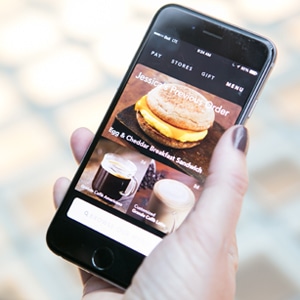
While there were efforts to provide banking through cell phones in the late 90s, the transition, around 2007, from cellphones to smartphones—with their expanded screen sizes and abilities—turbocharged the development of mobile banking.
The 2017 Digital Yearbook from brand consultancy We Are Social reveals astounding statistics: More than half the world now uses a smartphone; almost two-thirds of the world’s population has a mobile phone; more than half of worldwide Web traffic comes from mobile phones; more than half of all mobile connections are now broadband; and more than one-fifth of the world’s population shopped online in the past 30 days.
The trend shows no signs of slowing. “The proliferation of applications and affordability of user interfaces will make mobile banking mainstream. The potential is particularly significant in those markets outside the US where a large percentage of the population is currently unbanked because traditional banking is limited,” says Guillermo Gualino, vice president and treasurer at Agilent Technologies. “I believe most of the innovation will come from fintech players, but they will need to partner with banks for the application of new ideas and processes.”
Mobile wallets are a key area where nonfinancial companies are fighting for a slice of the payments pie. They include Apple’s mobile wallet, Apple Pay, based around near-field communication (NFC) contactless technology; Google Wallet, which focuses upon person-to-person payments; Zelle Network, which includes 20 banks and credit unions, is looking to compete in the mobile payments space and is poised to reach an estimated 85-million consumers in the US through the mobile banking apps of its participating institutions; and China’s top mobile-wallet app, Alipay. Moreover, Facebook, Twitter, Amazon and PayPal are all developing mobile-payment options.
“Arguably Uber is the world’s largest mobile wallet, followed by Starbucks [thanks to the popularity of their apps],” says Sankar Krishnan, executive vice president at Capgemini, noting that banks have lost significant market share to mobile wallets. “[But] we should not forget that the cards that power the wallets are all issued by banks and bank-type companies. There is no doubt that mobile payments will continue to grow. Banking is also getting increasingly mobile, as is evident from the significant growth of mobile-only banks and mobile-only robo-advisors.”
Globally, China is enjoying late-mover advantage. Chinese mobile payments were nearly 50 times greater than those in the US last year, largely because credit cards never really gained the same sort of traction there that they did in the West. In India, meanwhile, Unified Payments Interface (UPI) was launched to facilitate instant funds transfer between two bank accounts on a mobile platform.
“It’s an addressing system. I send money from A to B, and the central payment system figures out that A has an account with Standard Chartered and B has an account with HSBC,” explains Shirish Wadivkar, managing director and global head of payables and receivables at Standard Chartered Bank. “Imagine the convenience it makes. When I present the bill, for example, a loyalty card can flash at a particular coffee shop, and the authorization and exchange of money between the banks completely bypasses the credit card platform, making the experience around these platforms seamless and worry-free because you are never exchanging account numbers or card numbers.”
People expect friction-free experiences when using their mobile phones, in order to save both time and effort, which is what they expect when they use them for payments. The winners in this growing market will be the ones who can deliver what the customer wants.



